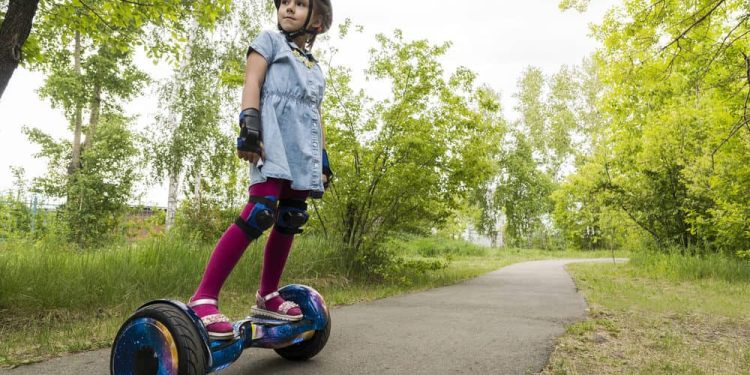If you have just purchased a hoverboard for kids or have plans to get one, you might be wondering about the best and safest environment to use it. So this article is for you. Hoverboards have a sleek design, and your child will definitely love their mechanics. But do remember that where they use a hoverboard can add or take away from that experience.
Keep reading to find out whether your child should be riding their hoverboard indoors or outdoors.
Can your kid ride their hoverboard outside?
Well, the simple answer is yes, but it’s not that straightforward. Hoverboards have some of the brightest and most colorful LED lights and an appealing structure that you’d love to show off. However, you need to consider some factors before allowing your kids to ride them outside. Here are some of these factors.
State laws
In some states, using hoverboards in public spaces is illegal. There have been many cases of powered transporters exploding, so this is strictly out of age and safety concerns. However, as technology improves over the years, and more hoverboard manufacturers are acquiring safety certifications, some cities are slowly allowing hoverboards in public areas again.
So, before you let your kid ride their hoverboard outside, ensure that you’re not breaking any laws by doing so. Although some penalties may not be so severe, it is just best to avoid them.
How the tires are designed
The size, material, and pattern of the hoverboard tires will determine whether or not your child can use your hoverboard outside. If the tires are big enough, at least 8.5 inches, they can be used on gravel and grass. Tires with grooved surfaces and durable materials are also great for rough surfaces.
Dust and water-resistant
If the hoverboard isn’t resistant to dust and water, using it outside could damage it. Hoverboards with an IPX4 rating are best for outdoor use, otherwise, water could get into the internal components and cause the hoverboard to stop working.
Motor capacity
You will need a hoverboard with a high-power motor if you want your child to ride it outside. Without enough power, their hoverboard won’t glide through rough and uneven surfaces easily. Plus, rough surfaces give your hoverboard extra work to do, so you might have to consider the battery capacity too.
Riding Your Hoverboard Indoors
Indoor hoverboarding can offer a controlled environment, particularly suitable for beginners. While it may seem like an easier option, there are still several considerations to keep in mind.
Floor Type and Tire
Indoor surfaces are obviously smoother than outdoor terrains, but that doesn’t mean any hoverboard tire will suit your floors. For indoor riding, you might want to opt for tires that are less aggressive in tread to avoid scuffing or marking floors. Air-filled tires provide a smoother ride but require regular maintenance. Rubber tires, on the other hand, are more durable but may leave marks on wooden or sensitive floors. Before making your choice, assess the type of flooring in your home to determine the best option for you.
Space
Sufficient room is crucial for indoor hoverboarding, especially if your child is a beginner. Navigating around furniture, corners, and other household items requires skill and spatial awareness. An open area like a basement or a large living room can be ideal for this activity. Make sure to move any fragile or valuable items out of the way to prevent accidents.
Safety Measures
Even within the confines of your home, safety should not be compromised. Make sure your child wears the necessary safety gear, including a helmet, knee pads, and elbow pads. It’s also essential to have adult supervision to monitor the child’s activities and intervene if necessary. Also, pay attention to the hoverboard’s speed settings. Luckily, many models come with beginner modes, which limit the speed and make it easier for a novice to control the board.
Conclusion
Hoverboards offer a versatile option for both indoor and outdoor use. When used indoors, considerations around floor type, available space, and safety measures become especially important. While indoor use offers the advantage of a more controlled environment, outdoor riding often provides more space and varied terrain for a more exciting experience. Each location has its pros and cons, and ultimately, the best choice may depend on your individual circumstances and preferences. However, if you can ensure a safe and spacious environment, then allowing your child to ride indoors can be a great way to get them started with this exciting activity.





